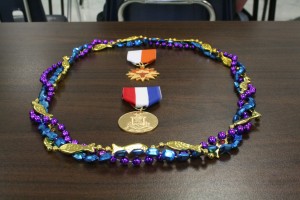It’s no doubt that San Antonio embraces the Hispanic culture that thrives within it. Fiesta is one of the most historical and respected celebrations that entertains millions people every year. It spans over 11 days with more than 100 events that are expressed with mostly Hispanic forms of art, music, and food. Fiesta traditions started back in 1891, when San Antonio had a population of 38,000.

Battle of Flowers Parade
This parade is what started Fiesta and remains the most famous attraction. It was formed to honor the heroes who fought for Texas in Battle of the Alamo and San Jacinto, with a Battle of Flowers. The first parade in 1891 consisted of horse-drawn, flower covered carriages and floats with participants to represent the battles and threw flowers at each other. Today, it is the only parade in the country to be completely planned and directed by women and is only second in size to the Tournament of Roses Parade.
NIOSA
NIOSA is a four-night event takes place in the historic, downtown village of La Villita. The year round preparation, planned by a chairman of the San Antonio Conservation Society Board, requires 16,000 volunteers for 85,000 visitors, starting in 1937 as a one day Indian Festival along the San Antonio River to celebrate heritage and raise funds for historic preservation. Even though the first event was rained out, it gained support over the years and was officially named A Night in Old San Antonio in 1948.
Order of The Alamo
This organization was founded by John Carrington in 1909, and is responsible for choosing the year’s queen and her court. This royalty is seen in major Fiesta parades and consists of a queen, princess, and 24 duchesses evenly split into 12 from town and 12 from out-of-town.
The King William Fair
The King William Fair draws away from the games and rides, and centers more on a variety of arts and crafts, from wind chimes to apparel. It is led by the King William Association and launched its first fair to preserve the oldest historic district in San Antonio. It started off as a one-block arts exhibit and today is a major Fiesta event.
All of these non-profit organizations constructing Fiesta help people to realize that there is more to it than carnival activities. If it wasn’t for Fiesta, the preservation of our city and its history would be lost.







